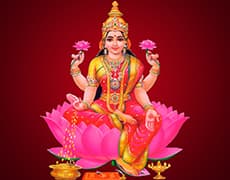Laxmi Poojan (Chopada Poojan)
Laxmi Poojan (Chopada Poojan)

Lakshmi Pujan is a Hindu religious festival that falls on Amavasya (new moon day) of Krishna Paksha (Dark fortnight) in the Vikram Samvat Hindu calendar month of Ashwin, on the third day of Deepawali and Tihar and is considered as the main festive day of Deepawali.
According to legend, Lakshmi, the goddess of wealth and lord Vishnu's wife, visits her devotees and bestows gifts and blessings upon each of them. To welcome the Goddess, devotees clean their houses, decorate them with finery and lights, and prepare sweet treats and delicacies as offerings. Devotees believe the happier Lakshmi is with the visit, the more she blesses the family with health and wealth.
Lakshmi is believed to roam the earth on the night of Lakshmi Pujan. On the evening of Lakshmi Pujan, people open their doors and windows to welcome Lakshmi, and place diya lights on their windowsills and balcony ledges to invite her in.
People wear new clothes or their best outfits as the evening approaches. Then diyas are lit, pujas are offered to Lakshmi, and to one or more additional deities depending on the region of India; typically Ganesha, Saraswati, and Kubera. Lakshmi symbolises wealth and prosperity, and her blessings are invoked for a good year ahead.
In the beginning, the houses are cleaned and a rangoli is drawn at the doorstep to welcome Goddess Lakshmi.
Once the place is smoked and cleansed, the puja begins by laying down a piece of new cloth on a raised platform. Handfuls of grains are sprayed in the center of the cloth and a kalasha made of gold, silver, or copper is placed on top. Three-quarters of the kalasha is filled with water and betel nut, a flower, a coin, and a few rice grains are added to it. Five kinds of leaves are arranged (if a specified species is not available, leaves from a mango tree are used) and a small dish filled with rice grains is placed on the kalasha. A lotus is drawn over the rice grains with turmeric powder and the idol of Goddess Lakshmi is placed over the top of the kalasha, and coins are placed around it.